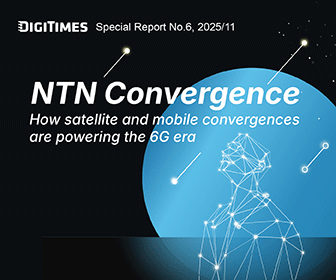As the US, EU, China, Japan, and South Korea race toward 6G technology, Taiwan, supported by the National Science and Technology Council (NSTC), is focusing on two key 6G projects scheduled for completion in 2025 and 2027, aligning with the International Telecommunication Union (ITU) timeline, according to Tzong-lin Wu, Dean of the College of Electrical Engineering and Computer Science at National Taiwan University (NTU).
Wu, also a distinguished professor at NTU and director of the Asus-NTU Joint Research Center, now leads the two major R&D projects: "Key Technologies for Next-Generation Communication Systems" and "Sub-Terahertz (Sub-Thz) Antenna Beamforming Key Chips." These initiatives aim to cultivate 6G talent, generate intellectual property, and foster industry-academia cooperation, as Taiwan is committed to securing a strong foothold in 6G.
Meanwhile, NSTC's Taiwan Chip-based Industrial Innovation Program (Taiwan CbI) includes a 6G-focused project, complemented by the Industrial Technology Research Institute's (ITRI) work on critical technologies.
The vice presidents of NTU and National Yang Ming Chiao Tung University (NYCU) are heavily involved in 6G research. NTU's executive vice president Wanjiun Liao's team is developing user-experience-driven 6G network technologies for immersive mixed reality (XR) applications. NYCU's vice president Ta-Sung Lee's team is working on high-speed, wide-area 3D networking technologies to support diverse services, aiming to contribute to international standards.
The first version of international 6G standards is expected by 2027-2028. Taiwan's government hopes local chip manufacturers can develop 6G chips before global standards are set, aiming for over 80% domestic technology autonomy in 6G. Funded by Taiwan's Department of Industrial Technology, ITRI and the Institute for Information Industry are working to complete designs for critical RF and baseband chips and 6G base station software by 2024.
Notably, NYCU's distinguished professor, Jyh-Cheng Chen, creator of "free5GC" — the world's first open-source 5G core network software — is now spearheading the development of 6G core networks. His contributions to open-source 6G systems within the 3GPP standards framework are instrumental in driving Taiwan's ambitious 6G goals. Chen plans to license his work under Apache 2.0 to accelerate the development and popularization of 6G mobile network applications in Taiwan.
Sheng-Fuh Chang, a telecommunications expert from National Chung Cheng University, noted that 6G aims to create a smart connected world through innovative technologies like ultra-wideband transceivers, AI integration, and space-time network unification. Key challenges include improving wireless communication reliability and reducing the number of transceivers and base station power consumption.
Taiwanese companies, including MediaTek and TMY Technology, are collaborating with Chang and contributing to the 3GPP standards-setting process. Their goal is to develop a reconfigurable intelligent surface prototype platform to control the electromagnetic environment, advancing passive and reconfigurable electromagnetic surface technologies.
ITRI Vice President Pang-an Ting emphasized Taiwan's leadership in the O-RAN ecosystem, with over 30 Taiwanese companies contributing to global standards. ITRI is set to build a 6G experimental network on its campus in 2025 for testing vertical domains and communication systems.




